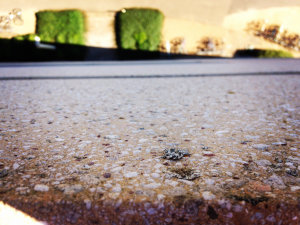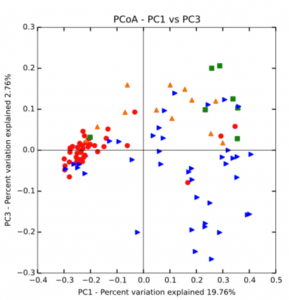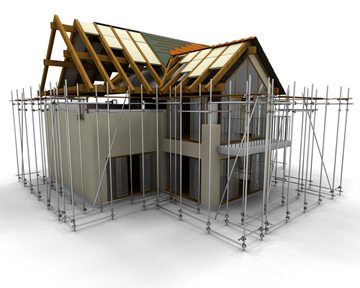Imagine a city skyline — what do you see? Skyscraper peaks, metallic sheens, sand-colored stones, rusty brickreds, dirty white plaster, glinting windows? That is a lot of surface area! I am curious about what can be eking out a living on all of these different surfaces, and how it might be contributing to urban ecosystems.

In a small study to check out whether or not microbial communities were affected by building material, I swabbed a variety of surfaces on two buildings in Davis, California, for a total of 100 samples. I took each sample over the same coverage with a cotton-tipped swab, which I then ran through for DNA extraction and isolation using a PowerSoil kit with a modified protocol for low biomass. After amplifying the 16S genes to pick out microbes with that gene segment in PCR reactions, I sequenced all of the samples in one Illumina MiSeq run. Detailing the material, texture, location, and orientation of the surfaces that I had recorded when taking the samples, as well as the date and time they were taken, I ran through basic diversity analyses in QIIME to see if there were any correlations between these factors and the communities I found. I did not see definitive trends, and I’ll include one of the most suggestive PCoA (principle component analysis) plots below for you to check out yourself. It is incorporating both the samples’ building and level.

While it was neat to see that the buildings seem to have a similarly constructed microbial community with respect to relative abundances, I think that in order to discern which factors are important to what lives where, a more comprehensive study would be necessary that includes a larger number of buildings and perhaps a more effective sampling method for low biomass. Of course, figuring out what is actually alive rather than dead debris would be super, too! PMA, anyone? #moreresearchneeded
